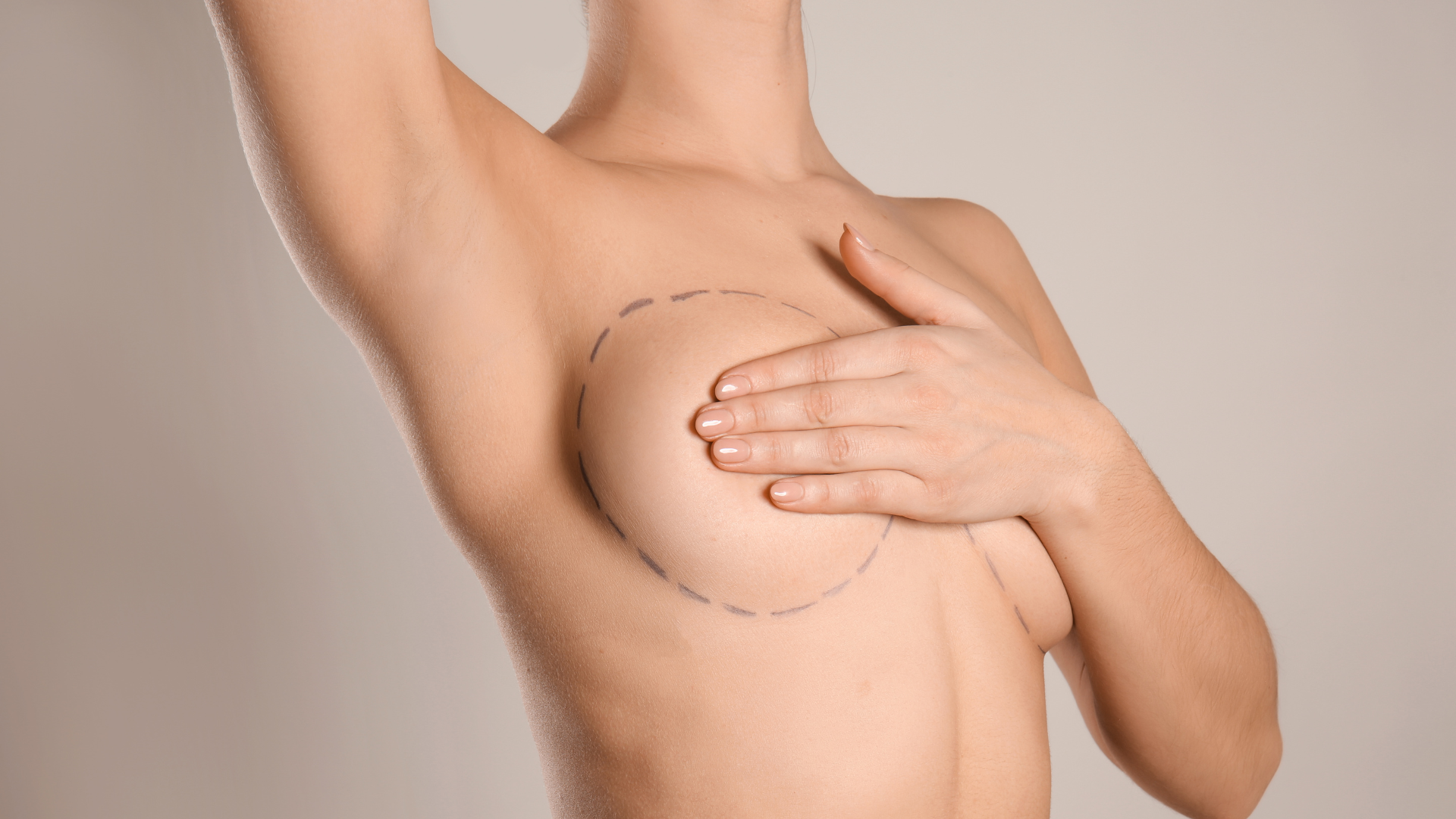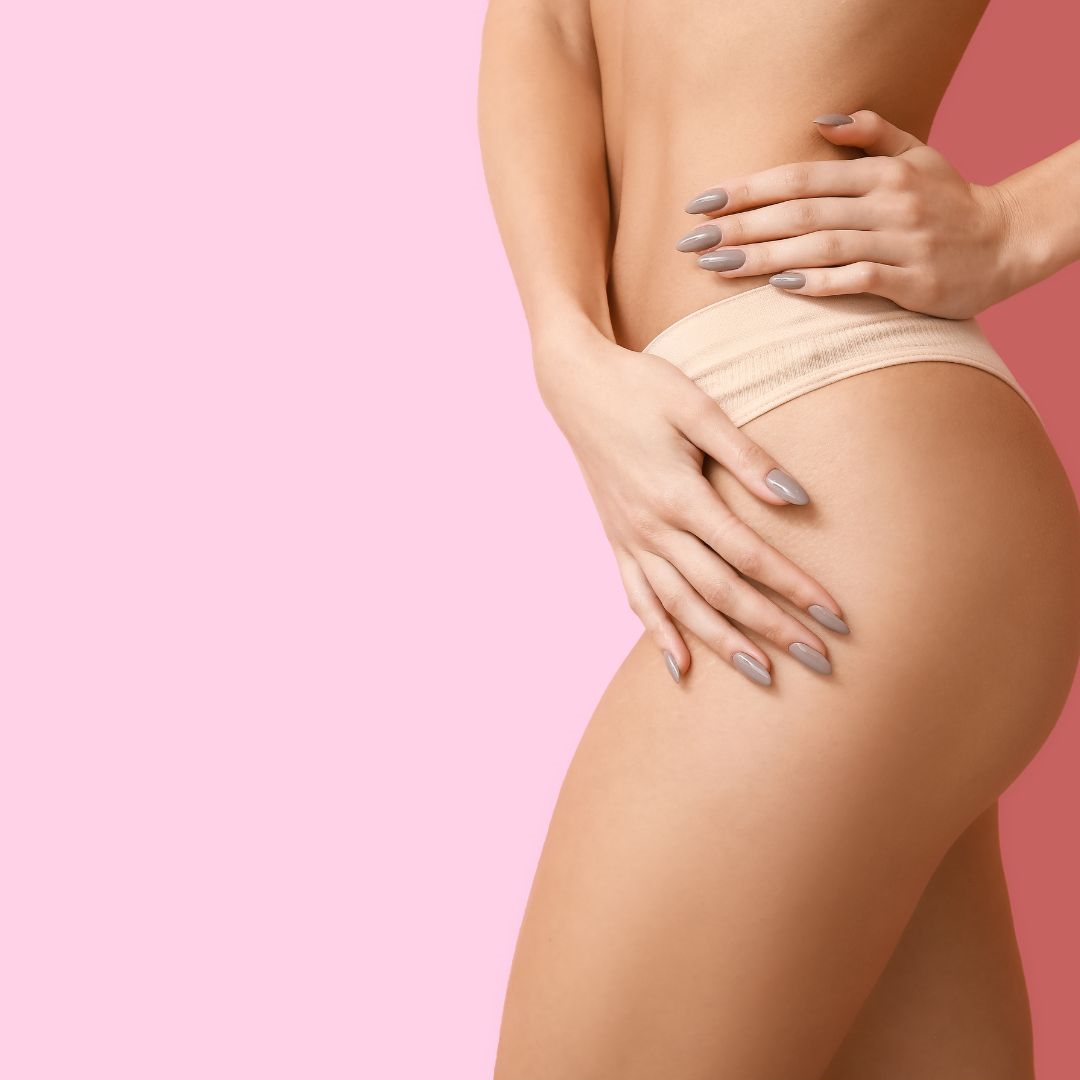Breast asymmetry refers to a condition where a person's breasts differ in shape, size, or position. It is extremely common for fully developed breasts to be slightly out of proportion, and in most cases, this is driven by natural genetic growth variations. While some may notice only a slight difference, others might experience more pronounced asymmetry. The important thing to note is that breast asymmetry is typically not a cause for medical concern.
Is breast asymmetry a sign of cancer?
Breast asymmetry is entirely natural, and in most cases, it isn’t a cause for concern or a sign of cancer. Many women have one breast slightly larger or differently shaped than the other. However, it is important to be aware of any changes in the size, shape, or density of one breast compared to the other, as these can sometimes indicate a potential issue.
If you notice any sudden or significant changes, such as a lump, skin dimpling, or nipple discharge, it’s important to seek advice. Changes in the breast may not always mean something serious, but it’s always best to consult a healthcare professional for peace of mind. You can book a private GP appointment at Pall Mall with same and next-day appointments available.
To stay proactive, regular self-examinations are key. Learning how to self-examine your breasts can help you detect any unusual changes early.
Causes of asymmetrical breasts
Mr Prasad, Consultant Breast Oncoplastic and Aesthetic Surgeon, at Pall Mall shares: “Asymmetrical breasts can occur for a variety of reasons, including natural differences in growth during puberty, hormonal fluctuations, or variations in breast tissue density. Factors such as pregnancy, breastfeeding, or weight changes can also affect breast size and shape. In some cases, past surgeries or injuries may lead to asymmetry.”
Although these differences are typically harmless, it's important to be aware of any sudden or unexplained changes in one breast.
Juvenile hypertrophy
Mr Prasad continues: “Juvenile hypertrophy is a rare condition where one breast naturally grows larger than the other. Although there isn’t a significant cause for this, it is believed that it could be down to hormone sensitivity.
“It’s a condition that tends to form around during puberty and occurs when breasts go through significant Breast Enlargement over a six-month period before a longer period of slower, sustained breast growth. This can be corrected through breast surgery.”
Pregnancy and breastfeeding
Mr Prasad added: “There are many hormonal changes that take place during pregnancy as the body prepares for breastfeeding, this can make the breasts larger or lopsided.
“After breastfeeding, it's common to wonder whether the breasts will return to the same size. In most cases, breasts may become more balanced after weaning, but they may not return to exactly the same size or shape as before pregnancy and breastfeeding. Several factors can influence this, such as genetics, how much milk each breast produced, and how long breastfeeding continued.”
Here’s what to consider:
Natural fluctuation: During breastfeeding, one breast might produce more milk due to the baby favouring one side, leading to lopsidedness. Once breastfeeding ends, milk production ceases, and the breasts generally shrink back to a pre-pregnancy size. However, they may remain slightly uneven if one breast produces significantly more milk over time.
Timeframe: It may take several weeks or months for your breasts to settle after weaning. During this time, fat tissue can replace milk-producing tissue, which can help restore balance. However, some women may notice a permanent change in breast size or shape.
Elasticity of skin and tissues: How well your breasts regain their pre-pregnancy size depends largely on the elasticity of your skin and the ligaments supporting the breasts. Some women experience sagging or asymmetry due to stretched ligaments and skin.
Permanent changes: In some cases, one breast may remain larger or differently shaped than the other after breastfeeding. This is completely normal and often not noticeable to others, though it might be to the individual. Surgery is an option if the difference is significant and causes discomfort or self-consciousness.
Breasts may even out after breastfeeding, but there's no guarantee they'll return to exactly the same size or shape. This varies from woman to woman based on individual body factors.
Hypoplastic breasts
Hypoplastic breasts, also known as breast hypoplasia, refer to underdeveloped or abnormally small breasts due to insufficient glandular tissue. This condition can result in breasts that are small, widely spaced, or asymmetrical. Hypoplastic breasts may also have a tubular shape or a disproportionately large areola. The condition is often congenital, meaning it's present from birth, and can be due to various factors such as hormonal imbalances, genetic predisposition, or developmental issues during puberty.
Women with hypoplastic breasts may experience challenges with breastfeeding, as the insufficient glandular tissue can affect milk production. In cosmetic surgery, hypoplastic breasts can be addressed through Breast Enlargement or reconstructive procedures to enhance breast size, shape, and symmetry.
There is no driven cause for hypoplastic breasts, but they can be due to hormones in the body or caused by injury or a medical condition.
Atypical Ductal Hyperplasia (ADH)
ADH is a condition where excessive growth tissue occurs in the breast’s milk ducts. Although this isn’t a direct symptom of cancer, ADH can increase the chances of cancer in the future.
It occurs when there are more cells lining the air duct than normal which are irregular in shape and size. This will form lumps in the breast which are harmless, but it may affect their appearance one way or another.
Addressing breast asymmetry
Breast asymmetry is common, and for most women, it’s a natural part of their body. However, if the difference in size or shape is affecting you or causing discomfort, you might consider addressing it. Some women opt for supportive bras, while others explore cosmetic options or medical advice. If you're concerned about sudden changes or want guidance on improving symmetry, speaking with a healthcare professional can provide reassurance and help you explore your options.
Non-surgical options
If you’re looking for non-surgical ways to address breast asymmetry, here are a few effective options:
Supportive bras or padding: Specially designed bras with built-in padding or adjustable inserts can help even out the appearance of your breasts. These bras allow you to add extra padding on one side, providing a more symmetrical look without any invasive procedures.
Custom prosthetics: Some women opt for custom-made breast prosthetics, which are designed to fit the specific size and shape needed to balance the appearance. These can be placed inside the bra and are often undetectable under clothing.
Posture and exercise: While exercises won’t change breast size, strengthening the chest muscles (pectorals) with targeted workouts like push-ups or chest presses may improve overall breast positioning, giving a more balanced appearance.
Clothing choices: Certain clothing styles, such as patterned tops, ruffles, or layered outfits, can help create the illusion of symmetry. Darker colors also tend to minimise noticeable differences in size.
Breast tape or inserts: For special occasions or specific outfits, using breast tape or silicone inserts can offer a quick and temporary solution. These help lift and even out the breasts for a more symmetrical look.
Each option offers a non-invasive way to manage asymmetry, giving you more control over your appearance.
Surgical choices
For those seeking a more permanent solution to breast asymmetry, surgical options are available. Here are some common procedures that can help enhance breast appearance:
Breast Enlargement: If one breast is significantly smaller, a Breast Enlargement (also known as an augmentation) can help achieve balance. This procedure involves the insertion of implants to increase size and improve symmetry.
Breast Uplift: For those with uneven sagging, a Breast Uplift (also called a mastopexy) can help reshape and lift the breasts. This procedure removes excess skin and tightens the surrounding tissue to achieve a more youthful, symmetrical appearance.
Breast Reduction: If one breast is larger and causing discomfort, a Breast Reduction can help bring the breasts into balance by removing excess tissue.
At Pall Mall we offer free, no obligation consultations directly with your surgeon of choice giving you the opportunity to discuss your aspirations in more detail.
Contact Pall Mall to find out how we can help
Pall Mall offers expert cosmetic surgery services at our private clinics in Manchester, Liverpool, and Newton-le-Willows. With access to state-of-the-art facilities and highly experienced surgeons. Our privately owned hospital is equipped to deliver exceptional care, from initial consultations to post-surgery follow-ups. Whether you’re considering a cosmetic procedure or need medical advice, we’re here to support you every step of the way. Book a free, no obligation consultation today.










